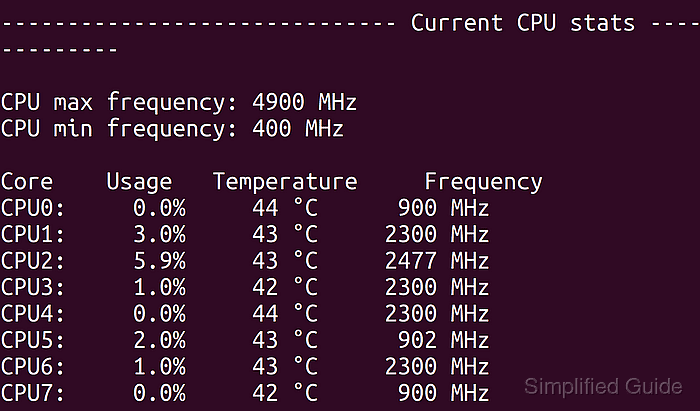CPU clock speed refers to the number of cycles a CPU can execute per second. Previously, it was represented as a single number in MHz or GHz. However, with the introduction of boost clock speeds and multi-core CPUs, understanding CPU speed has become more complex. To gauge a CPU's speed, you'll need to know its minimum (base), maximum (boost), and current speed, as well as this information for all CPU cores.

It's important to note that clock speed is not an absolute indicator of a CPU's performance, as modern CPUs include numerous optimizations. A higher clock speed doesn't always guarantee better real-world performance.
Linux offers various tools to display CPU speed. Some are pre-installed on most systems, while others require manual installation. The level of detail provided by each tool may also vary.
Steps to get CPU clock speed on Linux:
- Open the terminal.
- Retrieve the CPU model to view the manufacturer's official speed from the product specifications.
$ lscpu | grep ^Model\ name Model name: Intel(R) Core(TM) i7-10510U CPU @ 1.80GHz
- Find the maximum speed of your CPU.
$ sudo dmidecode -t processor | grep "Max Speed" Max Speed: 4900 MHz
- Check the current speed of your CPU.
$ sudo dmidecode -t processor | grep "Current Speed" Current Speed: 1683 MHz
- Install additional tools for real-time monitoring if needed, such as auto-cpufreq on Ubuntu.
$ sudo snap install auto-cpufreq # Ubuntu
- Run the monitoring tool to see live frequency data for all CPU cores.
$ sudo auto-cpufreq --monitor ##### snipped ------------------------------ Current CPU stats ------------------------------ CPU max frequency: 4900 MHz CPU min frequency: 400 MHz Core Usage Temperature Frequency CPU0: 0.0% 44 °C 900 MHz CPU1: 3.0% 43 °C 2300 MHz CPU2: 5.9% 43 °C 2477 MHz CPU3: 1.0% 42 °C 2300 MHz CPU4: 0.0% 44 °C 2300 MHz CPU5: 2.0% 43 °C 902 MHz CPU6: 1.0% 43 °C 2300 MHz CPU7: 0.0% 42 °C 900 MHz ##### snipped

Mohd Shakir Zakaria is a cloud architect with deep roots in software development and open-source advocacy. Certified in AWS, Red Hat, VMware, ITIL, and Linux, he specializes in designing and managing robust cloud and on-premises infrastructures.
Comment anonymously. Login not required.
